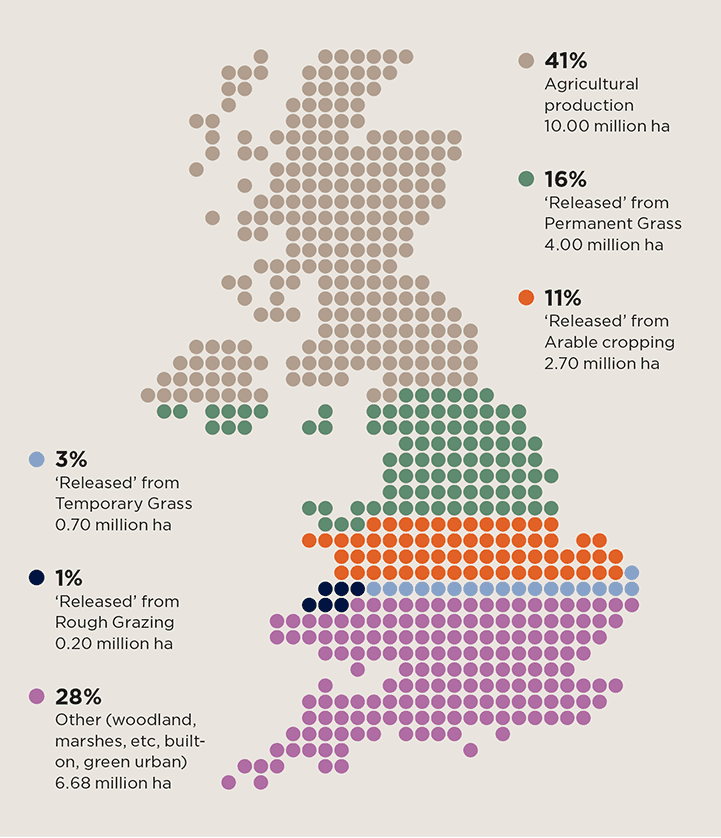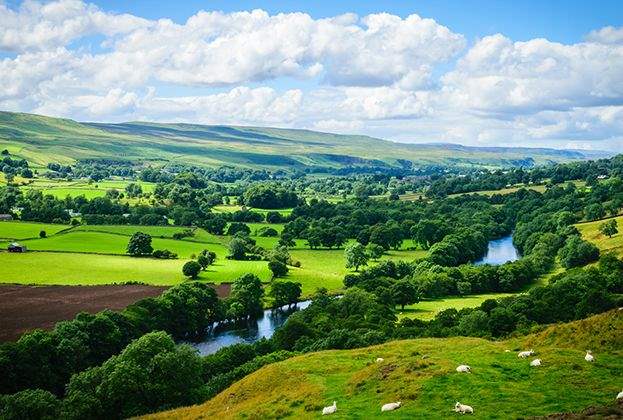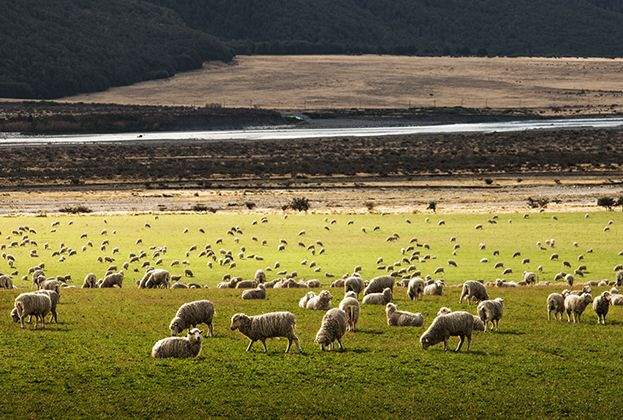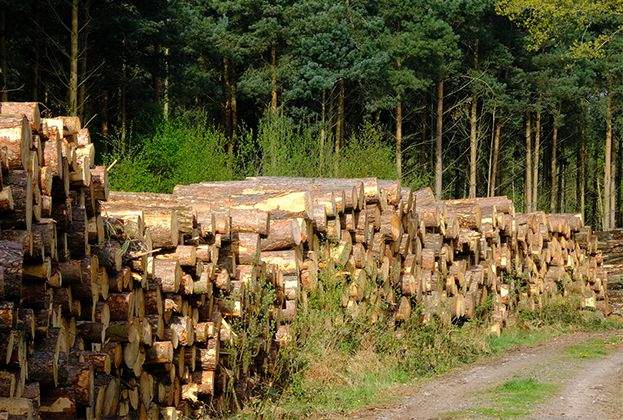Agriculture production area – according to the CCC this could shrink by 30% by 2050 (see map above compared with map 1). This scenario would make the maximum use of innovation and technology, need high levels of change in behaviour towards healthy eating guidelines, the willingness to try novel food sources and significantly reduce waste. The area ‘released’ could be used for more trees, environmental adaption, renewable energy or indeed to increase agricultural production.
1. Trees – inc. commercial forestry, hedgerows and agroforestry
To meet GHG capture targets up to 1.5 million hectares of new woodland would be needed to store carbon by 2050. In addition, to help mitigate GHG emissions and increase biodiversity while maintaining food production there is likely to be an increased area of agroforestry and hedgerows.
2. Environmental adaption including reclaiming peatland
In 2017, 6.8 million hectares or 27% of the UK land area were under environmental designations. These include National Parks and Areas of Outstanding Natural Beauty. These are under review and are likely to expand. Peatlands account for around 12% of the UK land area, but only around a quarter is in a near-natural or re-wetted state. Restoration and rewetting of degraded peatland currently under agricultural and forest land use will make a significant contribution towards the 2050 emission targets.
3. Energy
Significant planting of second generation biomass energy crops such as short rotation coppice and forestry – up to 1.2 million hectares for bioenergy crops by 2050. The area occupied by renewable energy infrastructure – especially ground mounted solar and feedstock for AD plants – is likely to increase.
4. Housing and Infrastructure
By 2050, 0.3 million hectares might be required for housing and infrastructure. This equates to 2.7% of UK land use and increases the current ‘built–on’ area by 21%.
.jpg)
.png)



